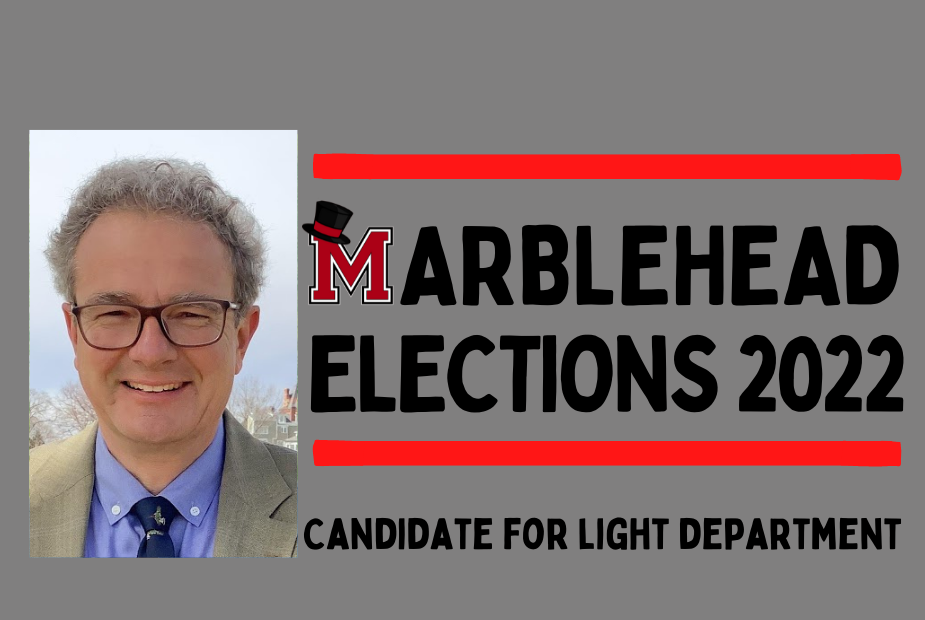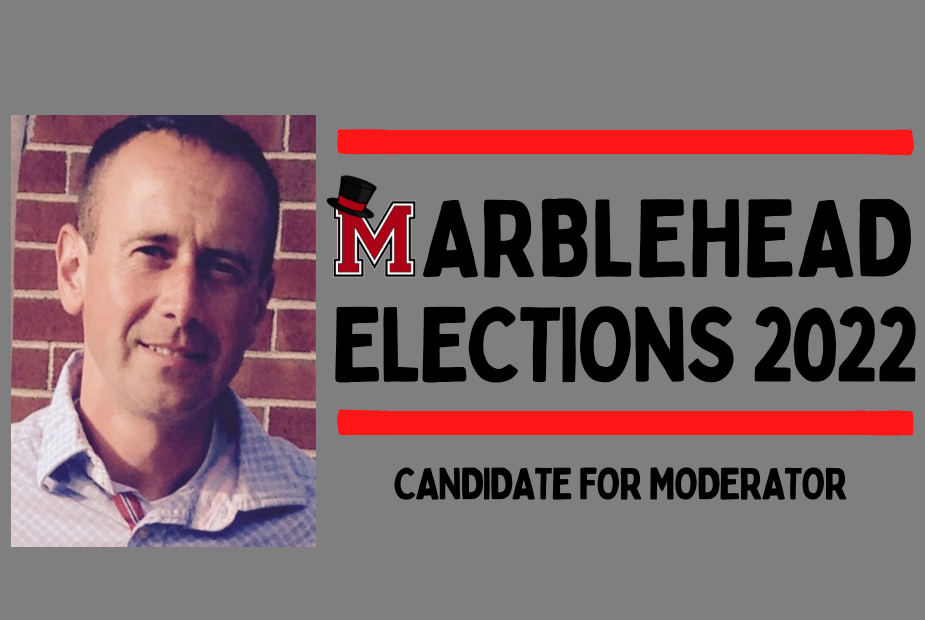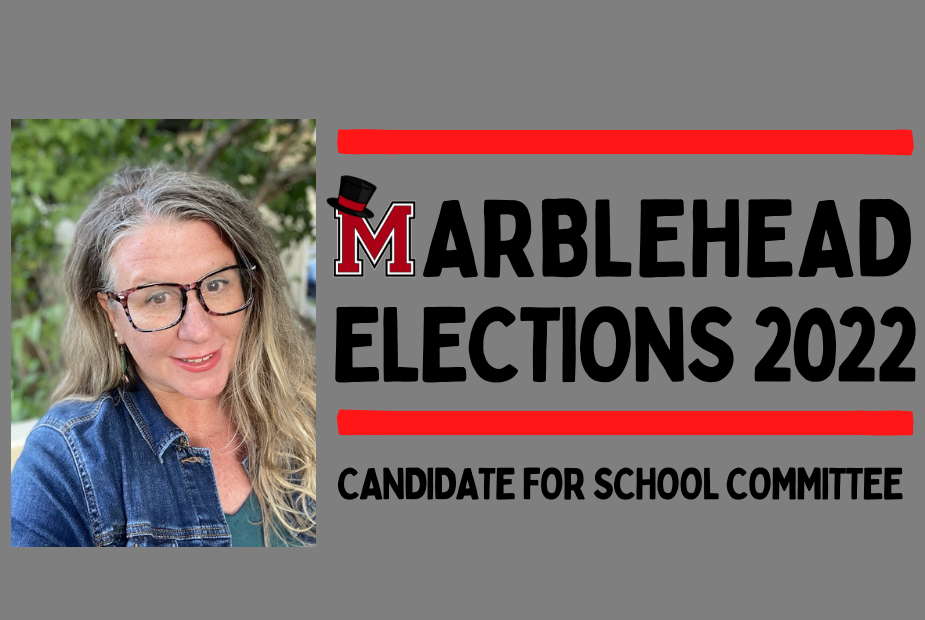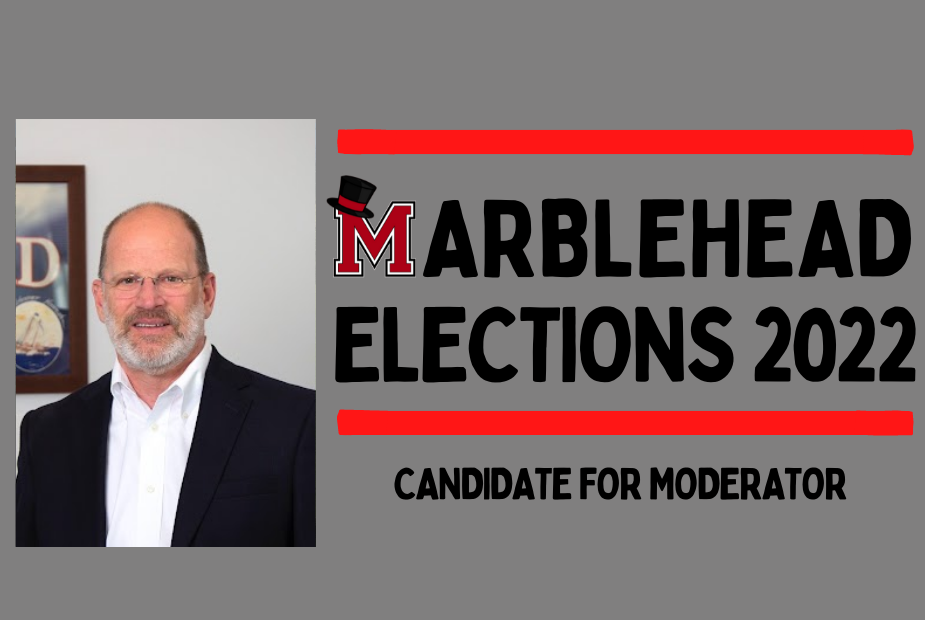Jean-Jacques Yarmoff - Candidate for Light Department
Marblehead Beacon is presenting these candidate profiles in advance of our June 21 town elections with the goal of helping the community learn more about all of the individuals volunteering their time to run for public office. Please note that the answers included here are printed exactly as provided by each candidate, with only minor typographical edits. Marblehead Beacon does not endorse any candidate or validate any responses. All candidates for the Select Board, Town Moderator, Board of Health, Light Department, and School Committee who had available contact information were given the opportunity to respond to a set of questions specific to the office for which they are running.
What is your professional experience and how has your background prepared you to serve on the Board of the Light Department?
I am an engineer by training. In my professional life, I have worked on innovative energy projects, including helping to develop floating wind farms like those now being tested off the coast of Maine. I have a good understanding of energy technologies and energy markets.
I also worked for 15 years in the pharmaceutical industry where, as in the utility industry, long-term planning and large investments are the norm. Planning is essential when new products take 10 years or more to come to market.
I have participated in Light Commission meetings for the last four years. I am very familiar with both the strengths of the Light Department and the issues that are ahead of us.
If you are currently serving, what do you believe are your most significant accomplishments thus far? If you are not currently serving, how would you evaluate the efforts of the Light Department over the past year?
Let’s clarify the separate roles of the Light Department and the Light Commission. The first question speaks to the work of the Commissioners, who are part of the five-member Board (the Light Commission) that oversees the work of the Light Department, a 20-person group led by its General Manager. By law, the Light Department does not “report” to the town’s government, but answers to the Light Commission that residents elect and the Department’s ratepayers.
The Light Department has done a good job despite difficult circumstances. For example, a significant number of the Department’s linemen left their jobs this year. Despite this turnover, Marblehead’s residents have not detected a dip in the quality of services.
The Light Commission is starting to address some of the critical issues that are facing us. Commissioners Wolf and Frechette, recently elected, have been charged with initiating a strategic planning process. This process needs to be a priority for the Light Commission. It cannot do its job of steering the Light Department without an agreed-upon long-term strategy.
This is particularly important as our infrastructure is aging, and in some cases obsolete. Our resources are limited. We need to make careful, timely choices in our investments. For this, we need a plan.
What are your top priorities to accomplish this year if elected or re-elected to the Board of the Light Department?
In the first year of my three-year term, if I am elected to the Light Commission, I want to see us complete an initial version of a strategic plan. This plan can be updated regularly as circumstances change and more information is gathered. It will serve as a guide for both the Light Commission and the Light Department. It will also serve as a tool to engage and educate Marblehead residents and gather community input.
As part of this plan, a clear prioritization of infrastructure investments is a necessity.
Another priority issue will be diversifying our sources of energy. A large and growing part of our electricity is procured on the spot markets (the ISO-NE grid). Wholesale electricity prices have nearly doubled in the first quarter of 2022 alone, because of steep increases in the price of fossil fuels. Diversifying our energy sources will help insulate us from price increases driven by our reliance on fossil fuels.
Do you believe that providing electricity at the lowest possible cost to ratepayers should be the primary goal of the Light Department? Why or why not?
Providing electricity at the lowest cost is of course very important, but it cannot be the sole priority! The Light Department and the Light Commission would not be doing their jobs if low rates caused half the town to go dark, or if we were plagued by constant brownouts. We need to have reliable infrastructure, and this has a cost.
Because all our electricity comes from Salem over one single line, strengthening our infrastructure is critical; without it, the whole town could lose power as it did in October 2021. We need to make sure this critical infrastructure is maintained and reinforced. We have postponed some critical investments for more than two decades. We cannot delay any longer.
Some of these infrastructure investments will help keep our rates low. Utility scale batteries at the Village Street substation, for example, will help shave peak demand and lower our rates over the entire year. As mentioned earlier, diversifying our energy portfolio, and relying less on fossil fuels are other important strategies to help keep our rates as low as possible.
Do you believe that ratepayers should be charged for electricity based on time-of-day usage (higher prices during peak hours)?
The underlying issue is lowering the peak of consumption that typically happens on hot summer days. There are at least four reasons why lowering consumption during these times is so important:
- At that time, the grid is near its maximum capacity. We are close to experiencing brownouts.
- The electricity we consume at that time is the most expensive.
- It is also the dirtiest electricity because older, lower efficiency fossil fuel plants are called into service by the grid to satisfy the demand.
- The amount of electricity that we use at that time (amount, not price) is used as the basis to set the capacity rate that Marblehead pays over the whole year, a very substantial part of the town’s electricity bill.
For all these reasons, shaving peak demand is extremely important and every small diminution of the peak consumption we can make will have an impact on the rates we pay for the entire year.
Shaving peak demand can be accomplished in many different ways. The first one is communication and education: letting people know about the importance of our collective behavior on our electricity bills. Technology is another way: as mentioned earlier, batteries can help by storing electricity off-peak and releasing it during peak hours. Yet another one is encouraging people to use their air conditioning and appliances before or after the peak hours and charging their electric cars at night. It is also less expensive for them to do so. I grew up in a country (France) where time-of-use rates were part of the fabric of life. My family -- which was far from being wealthy -- made the best possible use of the lower rates we had at night to stay within our budget. I can attest personally to the importance of having lower rates for low- or fixed-income families.
Marblehead currently caps the amount of solar capacity a household can install at 50% of the usage of the home on which it is placed. Do you support that cap?
In addition to the cap you mention, we currently have a ban on connecting batteries to our grid (such as a Tesla power wall, for example) making the economics of solar even more challenging. Instead of encouraging residents to produce their own electricity, we discourage them. I believe that Marblehead, as part of its strategic plan, should have a policy for solar-electricity production in town, both by individuals and through community solar (such as solar panels on municipal building and school roofs and solar arrays on town-owed property). As part of that plan, each rate payer needs to pay their fair share to maintain the grid infrastructure that we all need. But the two constraints mentioned are not appropriate when we need to produce more energy, not less, to meet our current and future energy needs.
The Light Department has recently signed a contract to procure electricity from a solar farm in Ludlow, MA. While good overall, producing our own energy here in Marblehead would help us avoid paying a transmission charge and would make the locally produced electricity cheaper. It would also help shave peak demand, discussed in Question 5, allowing us to lower rates throughout the year. An opportunistic contract that does not provide these benefits, while welcome, cannot replace a comprehensive plan to generate solar electricity locally.
Do you support incentivizing solar installations by allowing for solar panel net metering (selling extra power back to the grid) at the full retail rate as is currently done by investor-owned utilities like National Grid?
We currently have a rather generous net-metering rate in Marblehead, albeit with many constraints, two of which are discussed above. Programs where users do not carry part of the cost of maintaining the grid infrastructure are fundamentally unstable.
As Commissioner, I would push for a solar plan under which the Marblehead Light Department would encourage solar electricity production in town, while also making sure that residents who cannot have solar panels themselves are not burdened by an unfair share of payments for grid infrastructure.
Do you believe Marblehead residents should pay higher utility rates to achieve net carbon neutral status?
The question seems to imply that “non-emitting electricity” is expensive. The reality is that nuclear electricity is a major source of power in Marblehead and at the same time is the cheapest source of electricity we have. It is non-emitting. Nuclear is helping Marblehead (and the State) reach our net-zero objectives. Wind power, hydroelectricity, and solar are all very competitive and their share in Marblehead’s diversified portfolio must increase.
Let us be very clear that it is the tremendous increases in fossil fuel prices – which are likely to continue over time – which are going to force us to increase our rates. We cannot escape the economic realities around us. The fact that we increased by 37% our buying on the ISO spot market in 2021 over 2020 is cause for concern; wholesale prices on ISO grid went up 83% in the first three months of 2022, because of the rise of fossil fuel prices.
In this landscape, proven clean energy sources like off-shore wind, solar and hydro, as well as new technologies like utility-scale batteries, will help stabilize our rates while getting us closer to carbon neutrality.








